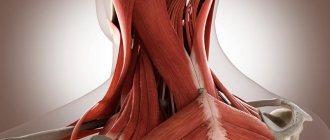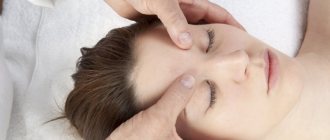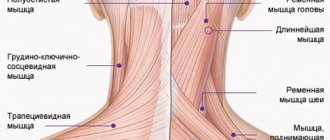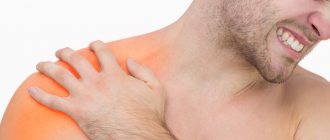Essential tremor is a fairly common hereditary disease of the central nervous system that can occur in children, but mainly develops in older people. The only manifestation of this disease is trembling. Tremors with essential tremor have different localization, severity, prevalence, characteristics and age of onset. Tremors of the head, hands, and tongue are most often observed. Lip tremor is slightly less common in adults.
Symptoms
Most often, essential tremor manifests itself as medium-amplitude and small tremors of the hands, alternating contractions of the flexor and extensor muscles, while muscle tone remains the same. Trembling becomes noticeable during purposeful movements; when approaching the target, its persistence or even a slight increase is observed. Rest tremor is much less common.
As the disease progresses, patients become unable to work. They become unable to serve themselves: due to difficulties in holding cutlery, they cannot eat food or drink water from a mug. Patients are unable to perform many activities that are necessary in everyday life; they need help even with buttoning up buttons and other trivial matters.
Due to the layering of emotional disturbances on the manifestations of tremor, patients develop social maladjustment. Hand tremors with essential tremor occur earlier than, for example, trembling of the lip (in adults) and other parts of the body. For a long time, hand tremors remain the only manifestation of the disease. As a rule, simultaneous trembling of both hands is observed, in rare cases - first only one, then the other.
Diagnostics
Determining the cause of numbness is the responsibility of a neurologist. Due to the possible connection between upper lip sensitivity disorders and dental pathologies, a dentist is often involved in the examination. Sometimes a consultation with an allergist or endocrinologist is required. The diagnostic program includes the following methods:
- General inspection
. The doctor evaluates the patient’s appearance and the condition of the tissue at the site of the lesion. Identifies signs of inflammation, traumatic injury, skin rashes, and other symptoms indicating the cause of numbness. - Dental examination
. Provides for the study of teeth and soft tissues of the oral cavity to detect caries, pulpitis, gingivitis, periodontitis, and other dental diseases. - Neurological examination
. Includes sensory and movement testing. The specialist asks the patient to close his eyes, stretch out his lips, bare his teeth, and stick out his tongue. Tests reflexes and muscle strength of the limbs. - X-ray of the tooth.
Informative for dental diseases, allows you to detect inflammatory processes, osteomyelitis, tumor lesions. According to indications, it is supplemented with other hardware diagnostic methods. - Tomographic techniques.
Effective for multiple sclerosis, stroke and cerebral circulation disorders. They help determine the location, volume and nature of the lesion, and choose the optimal treatment tactics. - Lab tests
. Necessary to confirm pernicious anemia, hypoglycemia in diabetes mellitus. To clarify the type of allergen that caused the development of Quincke's edema, allergy tests are performed.
Electroneuromyography
Various localizations
More than 50% of patients suffer from head tremors. Often, it is from this localization that the disease begins, and later trembling of the limbs occurs. The head most often moves left and right, less often - down and up, in a circle or diagonally.
Quite often, patients suffer from facial muscles - trembling of the lower lip develops in adults when smiling or talking. Tremor can also manifest itself as isolated, rapid, small twitches of the facial muscles. This type of tremor can occur at an early stage of the disease.
In addition, patients may experience mild tremor of the tongue or eyelids.
Elderly and middle-aged patients who have had the disease for more than 10 years may experience a trembling voice. Sometimes this symptom also occurs in younger people (up to 20 years old) with a disease duration not exceeding 5 years.
Almost a quarter of patients experience trembling of the lower extremities.
Trembling of the entire body is observed in rare cases, most often after physical exertion or emotional outbursts. This symptom may indicate the spread of the disease.
In a small number of patients, diaphragmatic trembling is observed, which can be confirmed by x-ray. When a combination of tremor of the tongue, lips, diaphragm and vocal cords occurs, speech and breathing rhythm may be disrupted.
Regardless of location, trembling intensifies with excitement, significant physical exertion, and hypothermia. When drinking alcohol, there is a decrease in tremor, but it intensifies the next day.
There is a childhood and youthful form of tremor, as well as a form of mature and senile age.
The disease is often diagnosed in patients of childhood and adolescence.
Essential tremor is benign: it does not pose a threat to the patient’s life, but it is constantly progressing, so this disease cannot be ignored.
Doctors at the Neurology Clinic of the Yusupov Hospital provide assistance to patients with essential tremor, aimed at eliminating symptoms that significantly worsen the quality of life of patients. The clinic provides high-quality drug therapy and physiotherapeutic procedures that significantly improve the patient’s condition.
Why does my upper lip go numb?
Physiological and cosmetic reasons
The appearance of the symptom is provoked by eating too cold or too hot food.
Numbness can also be a consequence of previous irritation of the upper lip from pepper or hot spices. At the same time, similar sensations are observed on the tongue and oral mucosa. The symptoms quickly disappear after stopping contact with the product. At sub-zero temperatures, strong winds, and high humidity, lips easily become chapped and crusty. Crusts impair the perception of tactile stimuli by nerve receptors, so their formation is accompanied by a feeling of numbness, which is complemented by a feeling of tightness due to a decrease in the elasticity of the skin, and the appearance of cracks.
In women, a decrease in lip sensitivity can be explained by individual intolerance to cosmetics (lipstick, lip gloss). Local itching, burning, and signs of skin irritation are possible. In some cases, the symptom is caused by an incorrect tattooing procedure or errors in lip care in the first days after manipulation.
Dental pathologies
One of the most common causes of numbness in the upper lip is diseases of the teeth and gums. The symptom is especially noticeable in severe inflammatory processes, accompanied by severe swelling of the oral mucosa and soft tissues of the face. It is provoked by gumboil, periodontitis, and gingivitis. In addition, numbness of the lip is observed after dental procedures performed under local anesthesia.
Trigeminal nerve injury
Isolated numbness of the upper lip rarely develops and is caused by trauma to the small branches of the n. maxillaris for bruises and open wounds of this anatomical area. A more common sensory disorder, simultaneously covering the upper part of the cheek, the side surface of the face, the outer corner of the eye, and the lower eyelid, is caused by damage to the trunk n. maxillaris, which is the second branch of the trigeminal nerve. It is found in fractures of the upper jaw, zygomatic bone, and compression by tumors.
Numbness of the upper lip
Migraine with aura
In patients with migraine with aura, an attack of cephalgia may be preceded by a transient loss of sensitivity in the hand, spreading to half the face and upper lip. Subsequently, the attack proceeds as usual. There is a throbbing or pressing pain in half of the head, nausea, slight dizziness, high sensitivity to bright light, loud sounds.
Cerebrovascular disorders
Numbness of the upper lip and other parts of the face and body is part of the clinical picture of a transient stroke or stroke. The symptom occurs against the background of headache, weakness, nausea, vomiting, vegetative-vascular manifestations (trembling, sweating, hot flashes), short-term disturbance of consciousness. Hemiparesis, decreased strength of certain muscle groups or one limb, facial asymmetry, and speech impairment are possible.
Hypoglycemia
Numbness of the lip is sometimes detected in patients suffering from severe diabetes mellitus; it develops as a result of severe hypoglycemia when using too high doses of insulin or poor diet. Combined with pallor, sweating, tachycardia, hand tremors. There are feelings of fear, excitement, followed by drowsiness, confusion, and fainting. Without help, coma is possible.
Quincke's edema
Numbness is caused by rapidly increasing swelling of the eyelids, cheeks, upper and lower lips. Quincke's edema forms against the background of an acute allergic reaction upon contact with pollen, animal hair, food, and other allergens. May be a consequence of pseudo-allergy. The condition develops suddenly within a few minutes, less often – hours. Hypoesthesia is often combined with skin itching, lacrimation, the appearance of copious nasal discharge, and difficulty breathing.
Herpes zoster
The cause of the pathology is the virus that persists in the body and causes chickenpox. Shingles symptoms may appear many years or even decades after the viral infection. The upper lip, as well as other parts of the face, become numb due to trigeminal neuritis. Typically, simultaneous involvement of the intercostal nerves, a rash along the affected nerve trunks.
Multiple sclerosis
The disease often manifests itself as weakness in the legs, combined with sensitivity disorders. Numbness and paresthesia are detected in the face, upper lip, torso, and limbs. There is a high probability of developing optic neuritis with reversible vision loss. Subsequently, with multiple sclerosis, paresis, symptoms of cerebellar damage, pyramidal disorders, and dysfunction of the pelvic organs are observed.
Pernicious anemia
The disease is caused by a disorder of hematopoiesis due to a deficiency of vitamin B-12. Manifested by weakness, tachycardia, dizziness, pale skin, puffiness of the face. Possible hypoesthesia of the upper lip, other areas of the face or limbs, and gait changes associated with neurological disorders. A characteristic sign of pernicious anemia is a “lacquered tongue.”
Neuroses
Loss of sensation in various parts of the body most often occurs in patients with hysterical neurosis. The patients’ complaints do not fit into the picture of a specific somatic pathology and are distinguished by pretentiousness and unusualness. Numbness of the upper lip is also sometimes seen in people with anxiety disorders. It may be part of the clinical picture of a panic attack or occur when the level of anxiety increases.
Treatment
Patients with mild manifestations of essential tremor do not need drug treatment. To eliminate tremors of one or another part of the body, they just need to give up caffeine-containing drinks (coffee, tea), eliminate alcohol and smoking, increase physical activity, time spent in the fresh air and avoid stress.
In case of severe essential tremor, drug treatment is prescribed. Timely initiation of therapy improves its effectiveness.
Chapter 2.
What are the types of seizures? How they develop and proceed.
You need to have this booklet-memo, since the correct diagnosis and treatment of attacks is primarily determined by how accurately and in detail you can tell the doctor about the attack. Reading the booklet will help you create a written description of the attack, with which you can go to the doctor and receive the correct treatment.
The first page of this booklet will not be used by you to describe seizures - it is just a summary of the main types of seizures. I put it here so that you understand that seizures come in different varieties, and that your description of seizures is of great importance for diagnosis. Do not try to make a diagnosis yourself based on these brief descriptions. The actual diagnosis of seizure type is much more complex.
The most common seizures in adults and children are manifested by various convulsions - in the form of twitching or muscle tension in the limbs and (or) other parts of the body. Convulsions in all parts of the body are usually accompanied by a disturbance of consciousness and are called GRAND SEIZURES. At the beginning of a LARGE ATTACK, a person may scream or freeze in place, then he falls, the body stretches out and twitching begins. Such an attack lasts several minutes.
However, there may be disturbances of consciousness without convulsions - “ABSENCES”. This name translated means “absence” - a person freezes with a fixed gaze for one or several seconds. Those actions that a person carried out before the attack stop or slow down during freezing. So, for example, if he was writing before an attack, he may drop the pen or draw an uneven line instead of letters. Such attacks in children can be repeated during the lesson. If a child who is considered healthy periodically freezes with his gaze fixed on one point, or seems to “daydream” for several seconds, or is often “distracted” in class, he may actually have seizures of the absence seizure type.
Less common are COMPLEX PARTIAL SEIZURES (COMPLEX FOCAL, including PSYCHOMOTOR SEIZURES). With them, the disturbance of consciousness is not so noticeable externally, but is longer lasting (from a minute or longer) and is manifested not by a loss of consciousness, but by unusual or abnormal behavior. You can therefore have time to assess the state of consciousness by asking a child or adult with a seizure a question, for example, “Can you hear me,” and not receiving a clear answer to this. During such a psychomotor attack, a person can talk incoherently, without meaning, laugh, or shout. MOTOR (motor) manifestations of a PSYCHOMOTOR attack in children may consist of getting up from their desks, aimless movements around the classroom, or limited to smacking, sucking movements, unnecessary movements of the fingers or hands, etc. The teacher may confuse such attacks with behavioral disorders or self-indulgence.
During absence seizures and some psychomotor seizures, a person does not remember what was happening around him at the time of the attack, including what others approached him with. Such attacks may be subtle to the person and others. Therefore, in childhood, the teacher must analyze the nature of errors in written work, which may be caused by short-term blackouts.
Many other rarer types of seizures may occur, which usually include some elements of the structure of the seizures described above. In the diagnosis of a seizure type, many other terms may be used, not just those listed above.
WHAT FAMILY AND AROUND SHOULD PAY ATTENTION TO DURING AN ATTACK SO THAT THE DOCTOR CAN CORRECTLY IDENTIFY THE TYPE OF ATTACK AND PRESCRIBE THE CORRECT TREATMENT. SCHEME-QUESTIONNAIRE FOR DESCRIBING AN ATTACK.
To select the most effective anti-epileptic drug, it is necessary to accurately determine the type of seizure, since different drugs have different effects on different types of seizures. Some features of seizures also make it possible to determine in which area of the brain the main epicenter is located.
Therefore, during an attack, do not panic. Firstly, follow the recommendations for help during a seizure (see recommendations: “HOW TO HELP WHEN AN ATTACK OF CONVISIONS OR CHANGES IN CONSCIOUSNESS”). Secondly, carefully monitor the attack and, at the earliest opportunity, immediately after its completion, write down your observations. This must be done not only before the first visit to the doctor, when it is necessary to first establish the type of attack or clarify it. You must describe the attack again after a doctor has diagnosed the type of attack if the nature of the attacks changes or if a new type of attack appears.
It can be quite difficult to accurately describe the epileptic attack itself. The patient himself often has a memory loss at the time of the attack and is unable to describe the attack himself after regaining consciousness. Witnesses of an attack, as a rule, are too shocked, helpless and, out of excitement, do not pay attention to details. Since the details of the attack have different meanings, below is a diagram highlighting the most important points in the description of the attack. Additional comments are provided next to some questions or groups of questions. Use them if you find it difficult to formulate an answer to a question.
If you or your loved one has not one, but several types of attacks, then carry out the description below separately for all types of attacks.
It will be much easier for you to describe the attack if, as quickly as possible after the attack, you write down the answers to the following questions:
QUESTIONS FOR A PERSON WITH SEIZURES:
How does an attack begin? Are you conscious throughout the attack or is there some lapse in memory? Does the blackout end suddenly, literally immediately, or does it take some time for you to feel completely normal? How long does it take you to finally come to your senses? How do you feel during an attack? How do you feel after an attack? Do your muscles hurt after an attack? Are there any bruises after the attack? In what parts of the body? Are there any bites of the tongue, lips, or oral mucosa after the attack?
If the person did not have a memory loss during the attack or the memory loss was incomplete or partial, then he is asked the same questions below as the witnesses of the attack: QUESTIONS FOR THE WITNESSES OF THE ATTACK (AND THE PERSON WITH THE ATTACK, IF HE REMEMBERS ANYTHING ABOUT IT ):
1. BEGINNING OF THE ATTACK. How did you determine the onset of the attack (how did you understand that the attack had begun)? What did you immediately notice? Has your facial expression changed? Is your face turning pale? Are your eyes open? Does the gaze stop (fixed gaze)? Are your eyeballs rolling under your forehead?
1.1. UNILATERALITY OF ATTACK MANIFESTATIONS AT ITS BEGINNING. Do the eyes and/or head turn in one direction? Which way? Is there any other one-sidedness of movement, cramps or sensations at the onset of the attack? Did movements or sensations begin in any isolated part of the body?
Comment: In order for the doctor to determine in which half of the brain the epi-focus is located, you must identify the one-sided manifestation of the attack at its onset. This is indicated by turning the head and eyes in a certain direction before the onset of convulsions, one-sidedness of sensations or the onset of convulsions, etc. A more precise localization of the focus can be established if cramps or sensations begin not in the entire half of the body, but in part of it (in the fingers or hand, corner of the mouth, etc.).
1.2. WAS THERE AN AURA AT THE BEGINNING OF THE ATTACK? If there was, describe it.
Comment: When describing the nature of the attack, it is very important to identify whether the child or adult feels the approach of the attacks and how. These sensations at the very beginning of attacks are called “AURA”. Although the word "aura" is translated as "wind blowing", it can also manifest itself in other sensations. The nature of these sensations at the very beginning of the attack allows an experienced doctor to determine the location of the epi-focus in the brain and use this information to select the most effective treatment. The fact is that an aura is the result of irritation of a certain area of the brain by an epi-focus existing in this area of the brain. In addition, some people manage to prevent the further development of an attack at the time of the aura if they influence their sensations in a certain way (see recommendations: HOW TO HELP DURING AN ATTACK OF CONVISIONS OR CHANGES IN CONSCIOUSNESS. HOW TO HELP BEFORE AN ATTACK).
The sensations that a person experiences during an aura are varied. This may be a sensation of warmth radiating from the abdomen or chest. An aura can be expressed in the form of a sudden appearance of an unusual or familiar smell in the absence of its real cause in the room, sound or vivid visual images (auditory and visual hallucinations). In addition, the aura can manifest itself in a feeling of detachment, novelty when being in a familiar environment, or vice versa - a feeling of the familiar, already experienced, which suddenly appears in an unfamiliar situation. Unusual obsessive thoughts and emotions may be observed (fear, anxiety, depression or euphoria, anger for no reason). There may be other sensations during the aura, which are characteristic only for a given person. There may be more or more familiar sudden sensations - shortness of breath, palpitations, pain in some part of the body, abdominal pain, nausea, dizziness, etc.
Immediately before the attack, a person’s behavior may also change - the child may run up to you or try to lie down, looking for a safe place.
It is necessary to immediately ask the child or adult what he feels at this moment and during the aura, since after the attack he may forget his feelings.
Particularly important is the description of a person’s sensations when he feels an attack (aura) approaching, but for some reason the attack itself does not develop. Such an attack is called PARTIAL ("partial") ATTACK, since the entire picture of the attack is limited to an epi-discharge in a limited part of the brain (aura). Depending on which sense organ (vision, smell, hearing, taste, touch) is represented in this part of the brain, the SENSORY (sensitive) version of PARTIAL ATTACK is limited to such sensations.
The duration of the aura before the onset of the main part of the attack is also important - if the aura lasts 1-2 seconds, then the epi-focus can be located in the temporal region, with a longer aura - in the frontal lobe of the brain.
2. MOVEMENTS DURING AN ATTACK:
2.1. CONVISIONS: Have you had any seizures? If noted, which ones (check among those listed below).
2.1.1. JERKINGS = CLONIC CONVASIONS:
In what parts of the body were clonic twitches noted? Were there twitches on both sides or in one half of the body or face?
Comment: Clonic seizures are rhythmically repeated twitches. Most often, they involve rhythmic flexion or extension of the limbs. These limb movements are of small amplitude or volume. There may be repeated rhythmic tremors of the body, rhythmic twitching of the facial muscles, sometimes with rhythmic squinting (blinking) of the eyes.
2.1.2. JIVERING:
In what parts of the body was trembling noted? Was there shaking on both sides or on one side of the body or face?
Comment: Trembling is a hythmic, very frequently repeated twitching of very small amplitude (without changing the position of the limb). General trembling (chills) occurs if a person is cold (“Trembling from the cold”)
2.1.3. JERKES = MYOCLONIUS:
Were there general shudders (myclonias) of the whole body? Was there one general startle during the attack or several? Was the general flinching accompanied by flexion or extension (throwing) of the torso and limbs? Were there jerks (myclonia) in specific parts of the body or muscles, and not in the whole body at the same time? In what part of the body? How often did the flinching occur?
Comment: Unlike clonic convulsions, myoclonus is a separate (isolated) sharp, very fast (tenths of a second) startle, and not rhythmic repeated twitching. If myoclonic jerks are repeated throughout the attack, then, unlike clonic spasms, not often and at different intervals (not rhythmically).
2.1.4. TONIC CONVASIONS:
Was there at the beginning of the attack or during its course a tonic tension of the whole body with throwing back of the head, extension of the whole body in the form of an arc? Was the body tense during the attack or was it sluggish and limp “like a rag”? Was there a tonic contraction of the limbs or slow involuntary tense movements? In which limbs? In what position were the limbs brought together? Is the corner of the mouth pulled to the side? Was there a facial grimace? Does the skin around the mouth turn blue during an attack? Does your whole face turn blue? Are there any other changes in complexion (pallor, purplish-red coloration)?
Comment: Almost every one of us has experienced non-epileptic tonic cramps in the calf muscles or seen them in our loved ones - the calf muscles become hard (petrified) to the touch, you experience pain, and the foot “cramps” into a flexed position. Epileptic tonic convulsions also consist of muscle tension. The muscles become hard and tense - the limbs and body are pulled out or they freeze in an unusual position. Such tonic convulsions, if they occur in the muscles of the torso, can be accompanied by breath holding due to convulsive contraction of the respiratory muscles - while the person’s face begins to turn blue. “Stationary” tonic convulsions at the beginning of an attack are then usually replaced by variable muscle tension, which is therefore accompanied by slow movements of the body and limbs (the duration of one such tonic movement is 10 seconds or more). During other attacks, muscle tone may, on the contrary, decrease and the body becomes limp, like a “rag.”
2.2. OTHER MOTOR ACTS DURING A SEIZURE:
What repeated stereotypical (all the time the same) manipulations are performed by the patient’s hands: clapping, patting, rubbing, tugging or other movements? If the patient continues to sit during an attack, what do his legs look like: calm or in motion?
If a person remains on his feet during an attack, is he standing still? Does it rotate around the axis of the body? Does it freeze in a certain position? If he doesn’t stand still, how does he move during an attack?
Were swallowing movements, chewing, sucking, or licking lips noted? Is the attack accompanied by any sounds - grinding teeth, smacking, hiccups, slurping, swallowing, meowing, sobbing, moaning, or are individual words heard? Is there a scream, or a strangled growl, or wheezing, gurgling breathing?
Were there general chaotic violent movements during the attack?
Did you urinate during the attack?
2.3. FALL DURING SEIZURE. Did the fall occur during the attack if the patient was standing before the onset of the attack? If he was sitting with support during the attack or was supported, could he fall in the absence of support and support? How did you fall - did you slowly sag? Did your legs suddenly give way? thrown to the floor by a body push? Does it always fall in one direction (which?) or only backwards? or just forward?
Comment: with unexpressed convulsions, a person can stay on his feet or still fall. It is necessary to determine whether the person can independently stand on his feet during any attack without severe generalized convulsions. If a fall occurs, it is important to know whether the person fell sharply or slowly sank to the ground.
2.4. ARE THERE ANY INJURIES AFTER THE ATTACK? Are there any bruises? In what parts of the body? Are there any bites of the tongue, lips, or oral mucosa? Is there a pink color to the saliva during an attack or immediately after it?
3. STATE OF CONSCIOUSNESS DURING AN ATTACK.
Does the person with seizures answer your questions? If he answers, how correctly and clearly? Ask him in detail about his feelings and what happened to him. If he doesn’t answer questions, then does he react in any way to your approach to him by fixing his gaze on you, following your movement, fulfilling your requests and instructions? If consciousness is preserved, is it maintained throughout the entire attack or is it possible that it can be switched off or changed at some point during the attack? If so, how and when does it change?
Comment: it is important to find out whether there is a disconnection or change in consciousness during an attack (whether the person reacts and how to an address to him, whether he follows with his eyes, whether he tries to respond to your address to him). A complete loss of consciousness is a sign of GENERALIZED seizures, in which the “electrical discharge” in the head is not limited to a part of the brain, but spreads (generalizes) to the entire brain. During some attacks there are no convulsions, but only a loss of consciousness is noted. There may also be an altered state of consciousness in the form of unusual sensations, experiences, hallucinations, delusions or unusual behavior
4. SPEECH IMPAIRMENT DURING ATTACK. If the attack occurs without impairment of consciousness, then it is necessary to check whether the person can choose the words correctly and pronounce the words correctly in response to your questions? Does he clearly pronounce sounds and syllables?
5. CONDITION OF CARDIAC ACTIVITY - it is necessary to evaluate the pulse only in case of fainting-like attacks. Is the pulse rapid or slow? Were there any pulse interruptions (pauses between heartbeats)?
6. DURATION OF ATTACK AND CONDITION AFTER ITS END
How does the attack end - suddenly or gradually with fading convulsions and movements? How long did the attack last? Did it last 1-3 minutes? Did it last longer? If you lose consciousness during a seizure, is it possible to establish contact with the person immediately after the seizures (or other movements) stop? If not immediately, then after how long? Does any part of the body remain weak after the attack? How long? Does speech impairment remain after an attack with normal consciousness? What kind of speech impairment (see point 4) and for how long? How many minutes (hours?) after the end of the attack is the person’s condition completely normalized and can he continue his normal activities?
7. WHAT TO PAY ATTENTION TO WHEN AN ATTACK OCCURS DURING SLEEP? At what part of the night do the attacks occur? Right after falling asleep? When you wake up? How many hours after falling asleep? In the morning? Does the attack develop during deep or restless sleep? In general, is sleep itself deep or restless?
Comment: HOW TO DETECT SEIZURES DURING NIGHT SLEEP.
Parents and relatives may not notice nocturnal attacks in a child or adult - their sign may be pain in the mouth and tongue in the morning (when examining the oral cavity, you can find traces of biting the tongue or cheeks, which happened at night due to spasm of the jaws during an attack) or complaints the child has them on them. Sometimes after a night attack you can find traces of saliva on the pillow (including with a pinkish tint). A sign of a nocturnal attack may also be a case of nighttime urinary incontinence that is unusual for a given child or adult. If there were cramps at night, in the morning there may be pain, aches, fatigue or stiffness in those muscles that tensed during the night cramps. Unusual lethargy, fatigue and headache in the morning can also be a consequence of an attack that occurred in the morning.
If you suspect possible night attacks, it is advisable that someone from the family sleeps in the same room with a child or adult, you should leave the doors open at night in order to promptly hear sounds that may accompany an attack: shaking of the bed, wheezing breathing, etc.
8. WERE THERE ANY PREDICTS OF THE ATTACK? If there were, describe them. Comments: There may not only be an aura immediately before an attack; sometimes, several hours or even days before an attack, a person may become lethargic, tearful or irritable. He may have a headache or decreased appetite. Using such PREDICTS, an adult patient or a child’s parents can foresee the possibility of an attack in advance. If you do not notice any warning signs, ask a relative or loved one to observe you. Precursors of attacks are more clearly and reliably identified in the process of more or less long-term observation of attacks, if the attacks are repeated (see and use the “DIARY (CALENDAR) OF ATTACKS”).
9. WHAT CAUSED THE ATTACK? If there was a reason for the attack, describe it. Comment: most often, an attack develops spontaneously, without any external causes, since its development is caused purely by its own processes inside the brain, not related to the external environment. However, in a minority of people, certain “external” causes and influences can contribute to the occurrence of a specific seizure (provoke it). This can occur with reflex epilepsy (read the recommendations “WHAT IS EPILEPSY, EPILEPSY, AND EPI-REACTION. PROGNOSIS FOR SEIZURES”). You should carefully look for these provoking factors and suspicious circumstances that preceded the next attack and record them in your diary (to do this, read and follow the recommendations “LIFE STYLE DURING EPIC ATTACKS”). Identifying some of these triggers and avoiding them in the future may make it possible to reduce the effective dose of the antiepileptic drug taken. The doctor may also prescribe auxiliary means and methods to influence these provoking factors to prevent attacks.
However, most often, attacks can be provoked by a violation of the rules for taking medications set out in the recommendations: “HOW AND WHAT YOU CAN HELP YOURSELF, YOUR LOVED ONE OR CHILD IN THE PRESENCE OF SEIZES. THE MAIN METHOD FOR TREATING ATTACKS.”
Factors causing or provoking attacks are more clearly and reliably identified in the process of more or less long-term observation of attacks, if the attacks are repeated (see and use the “DIARY (CALENDAR) OF ATTACKS”). If you don't know what triggers your attacks, ask a relative or close friend to help you. They may notice the following symptoms:
1) how active (or inactive) were you (or the patient) before the attack began? Were you lethargic (drowsy) or excited (irritated, emotional) before the attack? Did you engage in any active (mental or physical) work before the attack, actively had fun or passively rested. Was the attack caused by any thought, stress, expressed emotion?
2) did you have a “lack of sleep” on the eve of the attack (was the attack triggered by insufficient sleep duration - went to bed late, got up early?)
3) did you drink wine, beer or strong alcoholic drinks the day before the attack? How much did you drink?
4) what did you eat before the attack and how much (too much, too little, some unusual dish or product)? Did the attack occur when you were hungry (skipped your usual meal)?
5) did the development of the attack coincide with any other unusual situation or circumstances?
To the table of contents of the article “Convulsions, epileptic seizures and epilepsy.”









